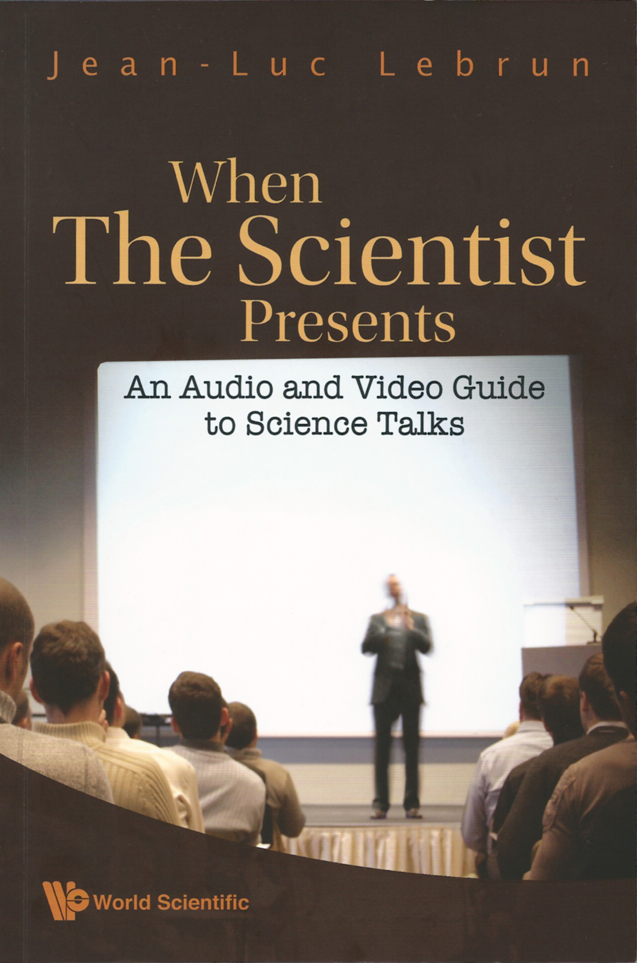
Published by World Scientific Publishing Co. 2010
ISBN 981-283-920-6 (paperback), with DVD-ROM 978-981-283-919-0. 252 p., USD 28 / GBP 21
File jad18_4.pdf contains this review in pdf format.
This book is a guide for the presenting scientist, written in the format of a "how-to'' book that explains, in a simple and direct style, how a presenter can make his or her audience stay throughout a short or a long lecture. The book is full of advice, and explicitly lists a number of situations that any presenter should avoid. The book includes a companion DVD that illustrates the techniques that are explained in the text. In addition, the guide refers to numerous web sites with supplementary information.
The book is divided in four parts: content selection, audience expectations, the slides proper, and the presenter. Each part includes several chapters.
The second part handles audience expectations, and mentions the signals that are broadcasted when the contact with the audience gets broken: rush-through, slide disorganisation, fast talking and fast pacing. This chapter also warns for the consequences of "hijack'', i.e., unsolicited and long interruptions by one or more participants that result in the above-mentioned detrimental effects that cause audience boredom. This part of the book also comprises many good tips on the learning of language.
The third part concentrates on expectation building through slide design, and identifies five types of slides - viz., title, hook, map, story, and conclusion. Each type is illustrated by an example, and by a design guide in question/answer format that tells you how to (and how not to) design each type of slide. Slide design involves all aspects of legibility at a distance, i.e., it involves the interplay between document design (graphics, fonts, colours), environment (the lecture room and its lighting conditions) and technology (the projector or screen, but also the microphone and the pointing and presentation tools). Most important is the advice on how to make the hook slide, and what kind of slide not to show at the end of your presentation. The presentation software also receives ample attention: this part of the book includes many hints for enhancing PowerPoint (Windows) as well as Keynote (Apple) presentations in order to optimally capture and sustain audience attention.
The last part deals with the presenter who, as a host, wants to deliver a great talk to the guests in the room. Attention is called to body language, attitude, self-generated anxiety, and voice. Most importantly, aspects of politeness - such as finishing the lecture within the allotted time, or the need for appropriate dressing -- are also documented. In addition, the speaker as a scientist is also described, with a stance toward disclosure of intellectual property, and ethical questions related to intellectual honesty. Finally, the process of answering questions is covered in detail.
The DVD with the audio and video examples is quite useful (for example, the map slide flash demonstrates handy tricks for navigation and for the creation of "secret'' buttons), although some of the podcast content is less relevant.
This book is meant for students, but also for their young and not so young supervisors. The book is very well typeset on good-quality glossy paper, and is a pleasure to handle. Unfortunately a couple of typos have crept in, and some repetitions create a mild déjà-vu impression. The reality stories about poorly-performing presenter Vladimir Toldoff are somewhat irritating. The discussion of the relationship between height of letter and distance from eye to projection screen in chapter 6 is "to the point'', but the mix of metric and non-metric units (for example "font size 10'') sometimes leads to confusion.
All in all, this book is very good value for the money.